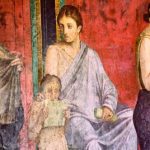 History
History  History
History  Pop Culture
Pop Culture 10 Cases of Grabbing Defeat from the Jaws of Victory
 History
History 10 Common Misconceptions About the Renaissance
 Weird Stuff
Weird Stuff 10 Crazy Things Resulting from Hidden Contract Provisions
 Facts
Facts 10 Unusual Facts About Calories
 Weird Stuff
Weird Stuff 10 Days of Humiliation When the Person Should Have Stayed in Bed
 Humans
Humans 10 Surprising Ways Game Theory Rules Your Daily Life
 Food
Food 10 Popular (and Weird) Ancient Foods
 Animals
Animals Ten Bizarre Creatures from Beneath the Waves
 Technology
Technology 10 Unexpected Things Scientists Made Using DNA
 History
History 10 Events That Unexpectedly Changed American Life
 Pop Culture
Pop Culture 10 Cases of Grabbing Defeat from the Jaws of Victory
 History
History 10 Common Misconceptions About the Renaissance
Who's Behind Listverse?

Jamie Frater
Head Editor
Jamie founded Listverse due to an insatiable desire to share fascinating, obscure, and bizarre facts. He has been a guest speaker on numerous national radio and television stations and is a five time published author.
More About Us Weird Stuff
Weird Stuff 10 Crazy Things Resulting from Hidden Contract Provisions
 Facts
Facts 10 Unusual Facts About Calories
 Weird Stuff
Weird Stuff 10 Days of Humiliation When the Person Should Have Stayed in Bed
 Humans
Humans 10 Surprising Ways Game Theory Rules Your Daily Life
 Food
Food 10 Popular (and Weird) Ancient Foods
 Animals
Animals Ten Bizarre Creatures from Beneath the Waves
 Technology
Technology 10 Unexpected Things Scientists Made Using DNA
10 Doomsday Scenes from the Year Without a Summer
On April 10, 1815, 14,000-foot (4,267 m) high Mount Tambora on the island of Sumbawa, Dutch East Indies (now Indonesia), erupted in a mighty cataclysm, spewing a gigantic column of debris 25 miles (40.2 km) into the sky. The blast was heard 1,600 miles (2,575 km) away—the biggest volcanic explosion in recorded history—100 times more powerful than Mt. St. Helens.
The pyroclastic flows killed 10,000 people, almost the entire population of Sumbawa. Tsunamis 16 feet (5 m) high smashed into islands across the Java Sea, wiping out thousands more. The ashfall blanketed the ground, killing all vegetation, and the resulting famine and disease added to the total fatalities—estimated at around 90,000 to 117,000—the largest in history for a volcanic eruption.
It was just the beginning. As 1816 dawned, the effects of Tambora began to be felt by the rest of the world. It would be remembered as the “Year Without a Summer,” when unseasonable cold enveloped the Northern Hemisphere as volcanic debris and aerosols blocked the Sun’s heat. The havoc created by the long winter on society was the greatest environmental disaster humanity has so far experienced.
Today, global temperatures are again changing—but in the opposite direction. Tambora’s effects lasted only a few years before the planet normalized. What we are facing may prove permanent. And unlike 1816, we will only have ourselves, not a volcano, to blame.
Related: Top Ten Lesser-Known Tragic Disasters
10 Eighteen Hundred and Froze to Death
It was June 7, 1816. By now, summer should have arrived in New England. Yet clockmaker Chauncey Jerome remembered that day in Connecticut: “While on my way to work, about a mile from home, dressed throughout with thick woolen clothes and an overcoat on, my hands got so cold that I was obliged to lay down my tools and put on a pair of mittens which I had in my pocket.” There were bizarre sunsets and a persistent dry fog enveloped much of the eastern seaboard. For New Englanders, the year was remembered as “eighteen hundred and froze to death.” In the United States and much of the rest of the world, summer never came.
Tropical Taiwan reported snow and frost. In usually hot and humid Madras (now Chennai), India, thermometers registered from 51.8°F to 26.6°F (11°C to -3°C) in April, freaking out the inhabitants. From Paris came the report: “All accounts agree that in the memory of no man living, has a season been so cold—they observe there has been no summer.” In Switzerland, 130 days of rain between April and September caused Lake Geneva to overflow, flooding the city. Trees did not have growth rings for 1816—the lack of sunlight and nutrients stunted them.
Many feared the Sun was dying. The English poet George Gordon, Lord Byron, noted with foreboding that in July, “the fowls went to roost at noon, and the candles were lighted as at midnight” and penned down his existential dread in the poem “Darkness.” Here, in his most pessimistic work, Lord Byron imagines the end of human life as the Earth becomes “a lump of death—a chaos of hard clay,” as in its opening lines:
“I had a dream, which was not all a dream.
The bright Sun was extinguish’d, and the stars
Did wander darkling in the eternal space,
Rayless, and pathless, and the icy earth
Swung blind and blackening in the moonless air.”
Indeed, the societal and economic upheavals that accompanied the volcanic winter of 1816 seemed to justify Lord Byron’s fears, as we shall see.[1]
9 Misery in Asia
Farmers in India depend on monsoon rains to turn semi-arid regions of the subcontinent into arable land. The Indian monsoon is the world’s largest weather pattern built up by asymmetric heating of land and sea, but in 1816, its development was slowed down by the 60 megatons of sulfate gases ejected into the atmosphere by Tambora.
The resulting disruption in the weather cycle caused drought, which devastated crop yields across India and set the stage for famine. The effect reached as far north as Xinjiang in China. Meanwhile, in mountainous Yunnan, bitter cold and high winds prevented rice from sprouting, triggering the great Jiaqing Famine, which lasted for three years. At its peak, peasants were reduced to eating “guanyintu,” a kind of white clay, and parents either sold their children or killed them rather than see them suffer.
One consequence of the famine was that farmers in Yunnan turned to an alternative crop to plant: opium poppy. In the succeeding decades, traffic in this drug grew so severe that opium addiction became widespread in China.[2]
8 Europe’s Last Great Famine
Just as it did in Asia, the Third Horseman of the Apocalypse stalked Europe, which had not yet even recovered from the ravages of the First and Second Horsemen in the just-concluded Napoleonic Wars. Crop failures and poor harvests followed the cold. Throughout the continent, desperate villagers ate “the most loathsome and unnatural foods—carcasses of dead animals, cattle fodder, leaves of nettles, swine food” to stave off hunger. In Germany, people made bread from sawdust. Jews were accused of hoarding corn, and antisemitic pogroms flared up. In landlocked Switzerland, the hardest hit, the government declared a national emergency. Total fatalities in Europe may be around 200,000, with Ireland alone accounting for 100,000.
Climate refugees crowded the cities or migrated to Russia or America. Unemployed and starving veterans of the war rioted and burned, beggars proliferated, and prisons were filled to the brim. Fearing revolution, governments implemented authoritarian measures, creating the rightward tendencies characteristic of post-Napoleonic Age politics. Fear of agricultural shortfall led governments to erect tariff walls, the first time protectionism became a standard policy in European and transatlantic trade.
Prices of available foodstuffs rose, and Wurttemberg, Baden, and Bavaria put an embargo on grain exports. \ Transporting food was also a nightmare as the incessant rains flooded the highways, and navigable rivers like the Rhine were swollen. There was a bright spot in the gloom—amid the trauma and chaos, many awakened to their humanitarian responsibilities.
Charitable societies set up soup kitchens and subsidized the cost of bread for the poor. It loosened the former laissez-faire ideology, which was gradually replaced by the mindset that ultimately led to the modern welfare state.[3]
7 First Cholera Pandemic
Cholera had been endemic to Bengal since ancient times. But in 1816, the bizarre weather altered the microbial biology of the Bay of Bengal, spawning a new and more virulent strain of the cholera bacterium, Vibrio cholerae, which possesses a highly adaptive genetic structure sensitive to changes in its watery environment. The inhabitants of Bengal, their immune systems severely weakened by malnutrition, were devastated by the disease.
Hitherto, cholera had been largely confined to the Indian subcontinent. But in 1816, infected British troops in Calcutta and Bengal carried the bacteria to Nepal and Afghanistan. By 1817, it had reached China and then traveled like wildfire to afflict Siam, Burma, Singapore, and Indonesia. Ships carried it to Sri Lanka, Japan, and the east coast of Africa. The Middle East was devastated, and the contagion was knocking on the doors of Russia when it mysteriously subsided. The first great cholera pandemic killed tens of millions between 1816 and 1823, including 10,000 British troops.
Cholera was not the only disease to follow the famines. In Ireland, a typhus epidemic lasted until 1819, killing 65,000. However, a more ominous threat lay in the stores of wheat Europe had ordered from eastern regions to alleviate the famine. Accompanying the grain were black rats harboring the fleas that carried the bubonic plague bacteria Yersinia pestis.
The Black Death was already ravaging Constantinople, Belgrade, Algiers, and parts of Italy. Now, it was on its way westward. Mercifully, Europe had left the Middle Ages far behind, and strict quarantines in ports like Marseille and effective Austrian border patrols kept the Black Death out of Western Europe this time.[4]
6 “Bread or Blood!”
Chaos descended in parts of Europe as people fought over scant resources. In France, theft and highway robbery became so common the authorities simply gave up going after offenders. Vagabonds seized grain caravans, and food riots broke out. In Vienne, French national guardsmen refused to shoot their fellow countrymen, making off with wagons of grain. But other disturbances were not so bloodless.
British industrial and farm laborers were the hardest hit by the famine and soaring food prices, which were exacerbated by the Corn Laws—tariffs on grain. Between March and May, the cost of wheat rose 33% in East Anglia. On April 17, a crowd of desperate, cold, and hungry laborers destroyed farm equipment at Gedding, venting their anger at the machines that took away many of their jobs.
For the rioters, the issue was survival. “Here I am… between Earth and Sky—so help me God,” said one. “I would sooner lose my life than go home as I am. Bread I want and Bread I will have.” A woman in Brandon summed it up, “Bread or blood!” This became a slogan, and one group that threatened to march on London inscribed it on their flag together with a spear. A less-than-sympathetic Times called them criminals and revolutionaries.
On May 22, rioters at Littleport attacked the home of their farm employer, Henry Martin, to demand a wage increase, but failing to find Martin at home only fueled their anger. They attacked the vicar and marched on nearby Ely armed with a punt gun. The Royal Dragoons were summoned and arrived the next day, charging the protestors, killing one and arresting 82 others. Of these, five—the ones most responsible — were sentenced to hang. Their bodies were displayed in coffins, a warning to those who would similarly foment rebellion. Littleport still considers them martyrs.[5]
5 The Bologna Prophecy
In late June, the London Times ran an article:
“According to the calculations of an astronomer of Bologna, who has lately published here [in Fermo, Italy] some observations on the subject, on the 18th of July, a great solar catastrophe is to put an end to the world by conflagration. The signs of this are the spots to be remarked at present on the Sun’s disk. The government, thinking it improper to suffer the circulation of such predictions, has put the astronomer under arrest.”
The so-called Bologna Prophecy terrified Europe. There were indeed more visible sunspots, and they awaited doomsday on July 18, when the Sun would totally cease to heat the Earth. In London, a 62-year-old woman hanged herself, and in Somerset, another fell into a catatonic state out of fear. Churches across the continent filled up with people.
In Ghent, Belgium, residents panicked when they heard a cavalry bugle call, which coincided with a thunderclap, believing they were hearing the seventh trumpet of Revelation announcing the Last Judgment. In the U.S., the Shakers bought large quantities of grain in anticipation of a seven-year famine. It is believed that Byron wrote “Darkness” in direct response to the prophecy.
The more learned shook their heads at the panic. “Such is human credulity!” lamented future U.S. President John Quincy Adams. The Leicester Chronicle was more scathing: “Some men differ from children in corporeal bulk only- and they frequently derive their knowledge from them.” In France, an astronomer gave lectures to educate the public that sunspots were harmless.
The 18th came and went without the planet freezing over. Still, true believers said God intended to end the world based on the Julian calendar, which was 11 days behind the Gregorian, so doomsday would be on the 29th. We all know how that turned out.[6]
4 Exodus to the Midwest
In New England and the eastern U.S., crop failures resulted in price increases and hoarding. Snow in June buried areas of Vermont 18 inches (45.7 cm) deep, and farmers who had already shorn their sheep tried to put them back on the freezing animals; many sheep died anyway. Livestock were killed by the cold, and birds dropped dead from the skies. The starving subsisted on nettles, wild turnips, and other root crops. We will probably never know the death toll in America—it is likely in the thousands. Even the well-off were not spared. Former president and Founding Father Thomas Jefferson’s Monticello suffered devastatingly poor harvests, miring Jefferson in debt from which he never recovered.
In these dire straits, the rich soil and mild weather of lands further west, like Ohio, Illinois, and Indiana, beckoned to New England farmers. In Vermont alone, 15,000 packed their belongings and headed for new homes. One of the climate refugees was Joseph Smith, Sr., who, with only $60 or so in his pocket, resettled his family in Palmyra, New York. This region was known two decades later as the “burned-over district” because it was toasted by many fiery religious revivals brought on by the confluence of different sects that settled in the area. Revivals calling for spiritual regeneration as a response to the winter apocalypse became common and a key theme of the Second Great Awakening.
It may have inspired the most enduring figure of the Second Great Awakening, Joseph Smith, Jr., Joseph Sr.’s son, who, having failed at farming, turned to treasure hunting. As he told the story, in the 1820s, he had visions of God and an angel named Moroni who told him to retrieve the golden plates with the writings that would become the Book of Mormon, the foundational scripture of a new religion, the Church of Jesus Christ of Latter-Day Saints. This makes Mormonism an indirect legacy of the Year Without a Summer.[7]
3 Climate Change Denial, 19th Century Edition
On June 19, 1816, the Essex Register of Salem, Massachusetts, noted: “Our very cold weather has been succeeded with such warm weather as gave us 90 degrees of Fahrenheit’s thermometer within doors… The account will be balanced probably before the season is ended”. It carried on in the same upbeat vein in the succeeding weeks. “The whole Atmosphere of the Globe has not become colder,” “the northern [harvest] is not so desperate as represented,” the harvest would be good “beyond our most sanguine expectations,” then that “[w]e hear from every quarter more favorable opinions of the season.”
Other newspapers were more cautious about publishing hopeful news, but the Register, for some unknown reason, had apparently taken leave of reality and ignored the seriousness of the unfolding disaster. Even as grain shortages in Lower Canada forced the government to place an embargo on the foodstuff, the Register cheerily waved a hand and reported, “Lately, the season had been uncommonly favorable.” It went further, juggling and cherry-picking data to “prove” that everything was normal. It was climate change denial of the first magnitude, employing the very tactics used by contemporary denialists.
The editor of the Register was Warwick Palfray, Jr., a staunch Democratic-Republican. We can only speculate on his motivations for climate change denial, but in our day, when the issue is heavily politicized, we wonder if Palfray also had political reasons for his denialism. Fortunately, the Register was a minority in its fantasy world. We wish it could be like this today.[8]
2 Speculation on the Cause
No one suspected that the eruption of a volcano in faraway Indonesia had anything to do with the unusual weather. People argued about likely causes, ranging from the totally ridiculous to the scientifically plausible. The most popular candidate was the sunspot theory. Sunspots are just areas of low convection on the Sun’s surface, and these cooler regions appear as dark spots on the photosphere.
But ordinary people in 1816 were under the impression that sunspots, because they darkened the Sun, allowed less heat to reach Earth. Actually, sunspot activity was at a minimum in that year. Still, atmospheric conditions made them more visible, so there seemed to be more of them. Astronomer William Herschel, discoverer of Uranus, had to produce a graph to demonstrate that there was no correlation between sunspots and the price of wheat.
Those who did not buy the sunspot theory advanced their own. One theory, absurd-sounding at first, actually came the closest, in principle, to the truth. It speculated that gunpowder discharges from muskets and cannons during the Napoleonic Wars disrupted the usual weather patterns. This was surprisingly similar to the “nuclear winter” scenario proposed by astronomer Carl Sagan in the 1980s, where war, in this case nuclear, can alter global temperature. That smoke might have something to do with the anomalies was a step in the right direction, as this was precisely what Tambora did. Instead of smoke resulting from human idiocy, it threw up ash in a massive natural display.
The Napoleonic Wars, of course, were not big enough to create smoke akin to nuclear war or Tambora. Humanity would have to wait for the next century for the mystery to be finally cleared up.[9]
1 The Sunset Painter
To some people in 1816, the spectacular red sunsets must have been the ominous signs of approaching doomsday. No one connected the fiery displays with a volcanic eruption. The effect was caused by the ash spewed by Tambora, when sulfur gases produced tiny particles called aerosols, which reflected sunlight back to space and blocked the blue wavelength of light, leaving the red end of the color spectrum dominant.
It’s a pity we don’t have photographic records of these surreal atmospheric phenomena. Still, we do have the next best thing—paintings. One artist mesmerized by the reddish-orange skies was Joseph Mallord William Turner, whose works were actually analyzed by scientists to estimate the environmental damage wrought by Tambora. Turner’s paintings were so accurate that there was an observable change in his palette after the eruption corresponding to the increased levels of gas and ash in the air. Scientists even matched red and green shades in The Lake, Petworth to data about volcanic matter in the atmosphere.
Other painters also recorded the light show for posterity. The German Romantic painter Caspar David Friedrich’s Woman in Front of Setting Sun also depicts the reddish-orange hues, but it might also be interpreted as an allegory of hope, with the woman looking beyond the dead crops to greener pastures, a message that the world would survive the environmental disaster.[10]








